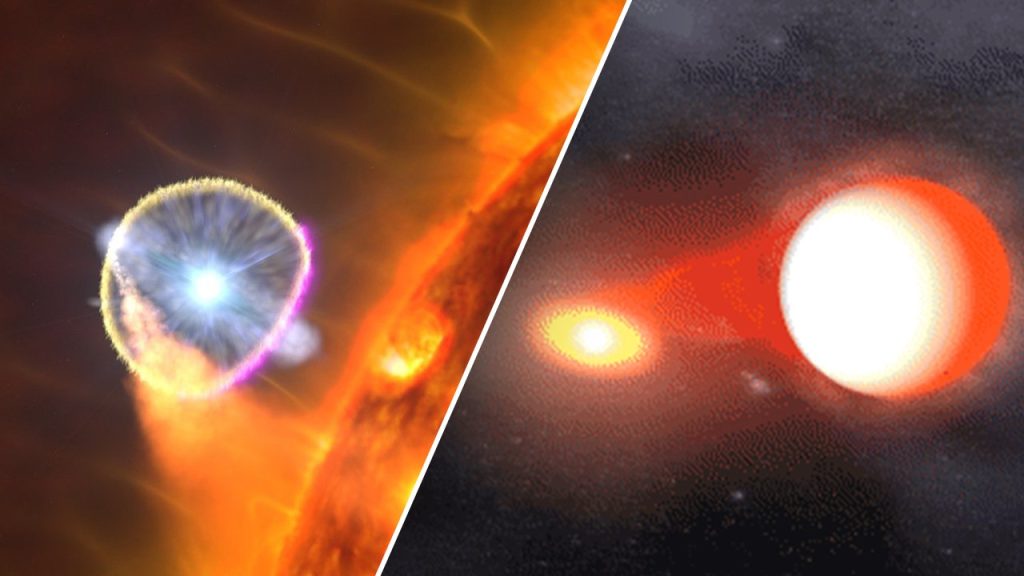Another special cosmic event is expected to happen in 2024, offering a “once-in-a-lifetime viewing opportunity,” according to NASA. This event involves a nova explosion in a star system located 3,000 light years away from Earth, predicted to be visible to the unaided eye. Known as T Coronae Borealis or “the blaze star,” this nova is one of 10 recurrent novas in the galaxy. The explosion occurs when a red giant star dumps material onto a white dwarf star, causing a thermonuclear reaction and a bright flare visible in the sky.
The last time T Coronae Borealis exploded was in 1946, and this upcoming event will allow sky watchers to witness a star that actually exploded 3,000 years ago due to the time it took for the light to travel to Earth. During the explosion, the star will increase in brightness from magnitude +10 to about magnitude +2, making it as bright as the North Star, Polaris. The explosion will be visible just to the right of the constellation Hercules, appearing suddenly and staying visible for about a week before dimming down. This phenomenon only occurs once every 79 years.
Although the nova explosion will not be as well-known as other cosmic events like solar eclipses, it is still considered a unique and remarkable sight. NASA’s Bill Cooke recommends going outside as soon as news of the explosion breaks to catch a glimpse before it fades away. He compares viewing T Coronae Borealis to witnessing the Great American Solar Eclipse that occurred on April 8, emphasizing the rarity and special nature of such events. Unlike solar eclipses that happen twice a year, the chance to see a star explode is much more infrequent.
The process leading to the nova explosion in T Coronae Borealis involves a red giant star transferring material onto a white dwarf star, triggering a significant increase in brightness that can be seen with the unaided eye. These recurrent nova explosions occur when enough material is dumped onto the white dwarf to start a thermonuclear reaction on its surface, resulting in a bright flare visible from Earth. T Coronae Borealis is unique in that it has a recurrence period of about 79 years, with the last explosion occurring in 1946.
The upcoming nova explosion in T Coronae Borealis presents a spectacular celestial event that offers a rare and unforgettable viewing experience. While it may not receive as much attention as other cosmic phenomena, such as solar eclipses, the sight of a star exploding is considered a remarkable and awe-inspiring event. Sky watchers are encouraged to stay informed about the explosion and be ready to witness the appearance of a new star in the sky for about a week before it fades away. This event serves as a reminder of the wonder and beauty of the cosmos and provides a unique opportunity to witness a celestial spectacle that only occurs once every several decades.


